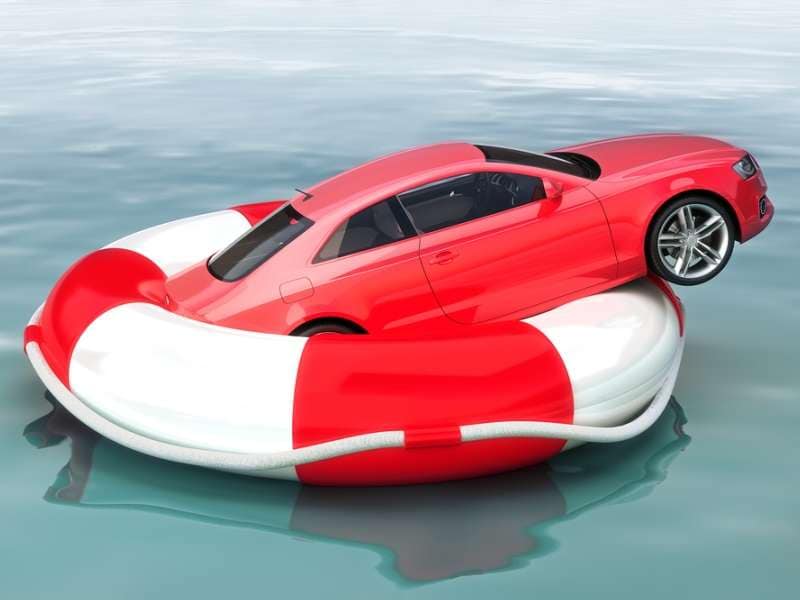Recent Articles
Popular Makes
Body Types
How to Escape from a Sinking Car
Advanced Preparation Is Key

Although the accidents can happen any time of the year, knowing how to escape from a sinking car can be particularly important during the summer months, when millions of folks across the country are headed to lakes, rivers and oceans to enjoy their vacation fun. Which is why Autobytel.com recently turned to Gerald M. Dworkin, a national expert on Aquatics Safety & Water Rescue for Lifesaving Resources, to get some tips on how to escape from a sinking car for our readers.
First off, Dworkin notes that this is no small concern. Some 400-600 fatalities occur each year as the result of vehicles being submerged in water—more than drown each year in swimming pools. Further, he also warns of an unintended consequence of recent changes to federal safety guidelines, originally meant to protect occupants from being ejected from a vehicle during a crash.
According to Dworkin: "As a result, many manufacturers are now building vehicles with laminated, rather than tempered, side-door windows. This is going to prevent occupant escape during a submerged-vehicle incident and also will delay the first responders' ability to access the inside of the vehicles. This means that although the number of incidents will not be impacted, the number of fatalities each year will certainly increase."
That being said, learning how to escape from a sinking car starts with being prepared in advance.
How to Escape from a Sinking Car: How to Prepare
The no. 1 tip for how to escape from a sinking car is making sure you don't get into the water in the first place, and that means being aware of your surroundings. Some vehicles will float in as few as six inches of water, but it's vital to remember that all will begin sinking eventually, usually in just 20 to 120 seconds. For these reasons, Dworkin advises drivers to develop and practice an escape plan in advance, much as people are supposed to do in case of house fires.
This includes making sure the vehicle is equipped with a rescue/escape tool for both breaking windows and, if necessary, cutting seatbelts. (Just note: Dworkin is clear that: "Wearing seatbelts will increase your chances of surviving a crash into the water.") The tool should remain within easy reach of the driver at all times—there are even small, spring-loaded versions that can be hooked to a keychain—and it can be worthwhile to ensure there are tools available for the passengers as well.
As another tip, although Dworkin indicates that both those spring-loaded tools and hammer-style models have proven effective in breaking tempered glass, the sharp points on the former can be dulled during "practice" runs, so owners need to be aware of that, too. Also, be sure to use work gloves during practice, to avoid possible injuries from shattering glass. (Dworkin recommends www.ResQMe.com/US/ as a resource for vehicle-escape tools in this country.)
When young children are involved, there can be an added factor in learning how to escape from a sinking car: Some—but not all—child safety seats will float in the water, so folks can cut the seats free from the traditional belts if necessary, without having to cut the actual safety-seat restraining straps. However, this is something that must be confirmed on a seat-by-seat basis with the manufacturers.

How to Escape from a Sinking Car: Do's and Don't's
Perhaps the most important thing to remember if you're in a vehicle that crashes into the water is what not to do: Do not waste time trying to call 911 or another emergency number and do not bother trying to open the vehicle doors. Plan to exit via one of the vehicle’s windows, instead, and as quickly as possible. Most modern-day vehicles will retain accessory power for about 30 seconds or so, after which time occupants face having to break the windows open to escape.
To help keep calm during an obviously panicky situation, Dworkin recommends an easy-to-remember four-step checklist for how to escape from a sinking car:
- Seatbelts—Get them off immediately, if necessary by using a rescue tool
- Windows—Get them open as soon as possible, again using the tool if necessary; in a vehicle with harder-to-break laminated side glass, the rear glass or sunroof (in vehicles so equipped) often remain tempered and become fall-back options
- Children—Remove them from their seats and push them out of the vehicle first
- GO!—Get out of the vehicle, leading any other occupants in a human chain, with each person holding another's hand
Now, if you absolutely can't break the glass, it's still possible to learn how to escape from a sinking car, but it takes significant lung power: Eventually, once the vehicle fills with water, the pressure inside and outside of it will be equalized which should allow the doors to be opened.

How to Escape from a Sinking Car: Other Top 10 Tips
In researching how to escape from a sinking car, Autobytel also turned up a wide range of other things to keep in mind, including:
- Most vehicles have their engines in the front, so will sink front-end first; this means the rear windows may make a better and easier escape route.
- Use any other heavy object at hand to try to break the windows if you don't have a specific rescue tool, with some folks noting that the metal prongs of a removable headrest may do the trick; most side windows also have weak points to aim for, at their bottom corners.
- Shoes and heavy clothes can hold you down when trying to swim free, so be ready to kick off footwear, coats, etc., while under the water.
- Do not worry about trying to turn off the vehicle's lights or other systems; in fact, the lights may remain on underwater and help you see your way clear of the wreck.
- During cold-weather months, at least 8 to 12 inches of clear, hard ice are required to support even a small vehicle on a "frozen" lake.
- Do not wait for water to stop coming in through a window before you start trying to get out of the vehicle.
- Do not try to take anything with you when exiting the vehicle.
- Along with having an action plan in place for family members and other regular vehicle occupants, be sure to discuss safety with new riders as well.
- Once out of the water, contact first responders immediately. This is especially important during the cold-weather months, when knowing how to escape from a sinking car can still lead to hypothermia.
- Many local public agencies, especially those in communities located near or on the water, also provide information about how to escape from a sinking car.
